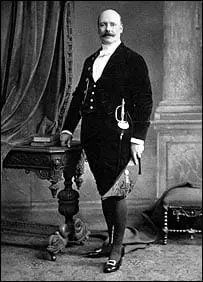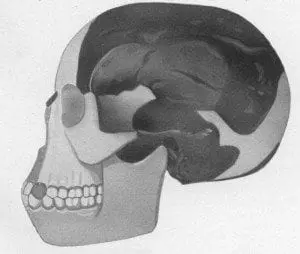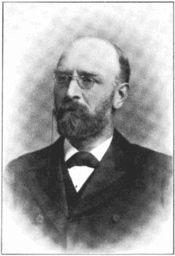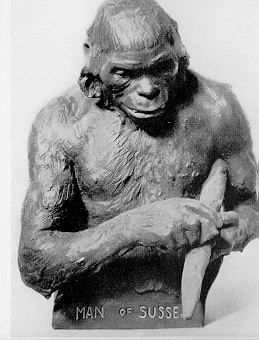“Students of fossil primates have not been distinguished for caution when working within the logical constraints of their subject. The record is so astonishing that it is legitimate to ask whether much science is yet to be found in this field at all. The story of the Piltdown Man hoax provides a pretty good answer.”—Beyond the Ivory Tower, pg. 65, by Lord Solly Zuckerman

Introductory remarks
It will be helpful in comprehending some aspects of this article if the reader has at least a minimum acquaintance with the broad outlines of the famous Piltdown Man hoax. If you have zero acquaintance with the subject, here is a very brief summary. The Piltdown Man fraud is generally regarded as the greatest scientific hoax of all time. Charles Dawson, lawyer and amateur archaeologist, geologist, etc., created a phony archaeological scenario with doctored-up artifacts, both hand-delivered by Dawson to the British scientific establishment (mainly Arthur Smith Woodward of the British Museum of Natural History) and planted in the ground, to deceive the world’s greatest scientists of the time (1912-1916) into believing that the remains of an ape-man, a missing link, had been found. Piltdown Man was just one of many frauds committed by Dawson over a time frame of approximately twenty-five years (more on Dawson-as-culprit to come). (See also The Piltdown Forgery by Joseph Weiner, The Piltdown Man Hoax: Case Closed by Miles Russell and Unraveling Piltdown by John Evangelist Walsh).

Piltdown Man was basically, though not exclusively, a British affair. Consider what Roger Lewin had to say in this connection. Bear in mind when reading the following words that these observations come from a hard-core evolutionist and anti-creationist:
“Piltdown Man, the ‘fossil’ that held the British anthropological establishment in its thrall for nigh on four decades…
“…the British anthropological establishment concluded in near unanimity that [orangutan] jaw and [human] cranium were indeed from one individual…Virtually every major voice in British anthropology proclaimed that although the cranium was clearly very modern in aspect, many apelike features could also be discerned; and that while the jaw certainly looked like that of an ape, the trained eye could readily discern important human characteristics in it…“‘Due to their devotion to these new [evolutionary] ideas,’ says Hammond, ‘a protective screen emerged around the forgery and played a crucial role in its initial acceptance and later defence’.”—Bones of Contention, pg. 60-62
And:
“Given all the many anatomical incongruities in the Piltdown remains, which of course are glaringly obvious from the vantage of the present, it is truly astonishing, that the forgery was so easily embraced, by much of the British establishment at least, any by some notable North American anthropologists, including Henry Fairfield Osborn.” Bones of Contention—pg. 70

To be fair (American) Osborn was initially skeptical that jaw and skull belonged to the same creature (after all, it was “found” in England). Osborn only conceded the authenticity of Piltdown Man to the British after Charles Dawson ingeniously cooked up a second specimen at a second (supposed) location. In today’s cosmopolitan world, it is easy to overlook the major role that nationalistic pride and envy played in the field of paleoanthropology at the time (to say nothing of narcissistic, egomaniacal vainglory-seeking on the part of many involved). A British ape-man was simply irresistible. Indeed, Arthur Smith Woodward went on to title his book on Piltdown Man as “The Earliest Englishman” (1948). Practically every commentator who has written at length on Piltdown Man has remarked upon the powerful influence which nationalism played in the story.
Dawson’s fraud was successful and was not discovered to be a fraud until 40 years later (!) in 1953 by Joseph Weiner and his associates (The Piltdown Forgery by Jospeh Weiner). Most (not all, but most) of the world’s leading scientists accepted the “find” (or acquiesced to majority opinion) as a genuine ape-man. Ridiculous “reconstructions” of Eoanthropus Dawsonii (“Dawson’s Dawn Man”) wound up proudly and triumphantly on display in the British Museum of Natural History and the American Museum of Natural History deceiving virtually the entire world for 40 years. Two generations of schoolchildren were raised on a monumental lie in their textbooks.

It should be pointed out in this connection that the fraud was easily detectable even in 1916 if only a simple magnifying glass had been aimed at the filed down molars, or if the impossibly conflicting angles of wear on adjacent molars had been properly noted. Moreover, a comparative specific-gravity test conducted on BOTH jaw and cranium would have proven conclusively that the jaw and skull came from two different creatures. Only the cranium was so tested. Likewise, a chemical evaluation of BOTH cranium and jaw would have revealed that the jaw had as much organic matter as fresh bone, but only the cranium was evaluated for this and was shown to have no organic matter at all (Weiner, The Piltdown Forgery, pg. 71). These omissions were just a few of the critical failures (among several others) of due diligence on Arthur Smith Woodward’s part, and seem inexplicable. After all, the initial dispute about the “finds” was whether the skull and jaw really came from the same creature. Woodward’s derelictions of duty at so many crucial junctures furthered along the hoax and appear suspicious so I can understand why some point the finger at him as the perpetrator. However, there is no real evidence implicating Woodward as the actual perpetrator, just circumstantial inference. Woodward is certainly culpable in the Piltdown Man fraud but not as the perpetrator. Opportunist maybe, but not perpetrator.

It is my considered opinion, having read nearly every major work on Piltdown Man and many secondary works, that Arthur Smith Woodward had his doubts about the genuineness of the Piltdown Man “remains” as a singular creature. But Woodward had what he wanted (support for the hypothesis of evolution—and his particular hypothesis at that) and he was not about to rock the boat, especially since he had his ambitions set on the directorship of the British Museum of Natural History. A monumental discovery such as an accepted “proof” of human evolution, a missing link between man and ape, would go a long way to obtaining that ambition. Better to just leave matters as they were and not potentially upset the apple cart by poking around too much and possibly uncovering details not amenable to the storyline.

Evolutionists respond with resentment when creationists refer to the Piltdown Man hoax (and the Nebraska Man hoax) in their polemics. Evolutionists seem to think there is something unfair or prejudicially irrelevant about creationists’ citations of these hoaxes. But even such high-level evolutionists as Lord Solly Zuckerman and Roger Lewin Ph.D., as we have seen, have done so at some length and they have strongly generalized those hoaxes as representative of how the entire field of paleoanthropology functions. Such observations and criticisms of the field of paleoanthropology have by no means been the exclusive domain of creationists. There are valuable lessons to be learned from the Piltdown Man and Nebraska Man hoaxes. Some evolutionists have acknowledged those lessons. From all indications, however, evolutionists in general are resolutely opposed to learning those lessons. This opposition belies fears that the lessons so-learned will overturn the credibility of evolution in general. And they may very well be right.
Piltdown and Placebos: the Evolutionary Placebo Effect
“I am also aware of the fact that, at least in my own subject of paleoanthropology, ‘theory’—heavily influenced by implicit ideas—almost always dominates ‘data’.”—David Pilbeam, Curator of paleoanthropology at the Peabody Museum of Archaeology and Ethnology, quoted by Roger Lewin, Bones of Contention, pg. 127
During the course of my time researching the Piltdown Man hoax, a very remarkable insight occurred to me: the Piltdown Man hoax created an actual scientific control group testing the field of paleoanthropology. Let me explain…
It has long been a known and accepted fact among scientific researchers that the human mind can have amazing effects on the human body; this includes everything from lowering blood pressure, to eliminating headaches, to healing skin rashes (or even creating rashes), ad infinitum. The human mind can exert a very powerful influence upon the biological processes of the human body.
In scientific research, especially in the testing of new drugs, control groups are routinely used to eliminate or counterbalance the “placebo effect,” that is to say, one group of people are given a real drug (the test group) and the control group is given a false drug that is in reality nothing more than a pill or injection of inert material. The subjects in both groups are told what the drug is supposed to do. Because there is a very real “mind over matter” aspect to the human body the people in the control group cannot be allowed to know they have been given a false drug. (Interesting, is it not, how real-world practical science is pursued upon metaphysical, supernatural assumptions?)
In drug testing where placebos are given to control groups, an underlying assumption of this type of research is that BOTH of the groups are subject to the placebo effect, not just the group given the false drug. The test group given the real drug is also subject to psychologically-induced placebo effects. In the actual test group, that is to say the group that is given the real drug, the goal of the experiment is to distinguish in that group the actual effects of the drug from the psychological effect of their minds upon their bodies. The only way to realistically accomplish that goal is to compare the results to a control group administered a false drug. Thus, the actual efficacy of the drug is determined. That is a gross oversimplification, of course, but that is the basic idea. This is all standard procedure for drug testing.
What does all this have to do with evolution and the Piltdown Man hoax? It is my assertion that the Piltdown Man hoax, in “administering” a fraud (a false drug, if you will) upon a group of evolution-minded scientists (paleoanthropologists), inadvertently created an ACTUAL control group experiment valuable in testing and comparing the validity of scientific research in regard to the field of evolutionary paleoanthropology as a whole.
Regarding the Piltdown Man hoax, and its relevance to evolutionary research in general, we are concerned here with what I liken to the placebo effect. The Piltdown Man hoax functioned inadvertently as an effective control group experiment to test how scientific investigation as a whole is actually conducted by evolutionary scientists and how valid evolutionary conclusions are. The scientists involved in the Piltdown Man investigation may be compared to the subjects in a drug testing experiment given a false drug and then compared to the scientific discipline of paleoanthropology as a whole who are investigating real artifacts that need to be evaluated and properly interpreted.
To my mind, the results of the control group aspect of the Piltdown Man fraud are the most important and significant aspect of the whole Piltdown Man affair. The Piltdown Man “artifacts” (the human cranium, the orangutan jaw, the conveniently-missing condyle connecting jaw to skull, the filed-down teeth, the fauna, the artificially stained paleoliths) were the equivalent of a placebo, and the outcome of the research (the ape-man, Eoanthropus dawsonii, Piltdown Man) constituted the placebo effect.
Piltdown Man was not real. He was conjured up and existed only in the minds of the evolutionary scientists who were utterly desperate to have their missing link—especially an English missing link. We learn from this “experiment” to be on guard for subjective analyses of evolutionary scientists in their assessments of the artifacts at their disposal.
Here is the vital question: How much of what we are told about evolution in general by evolutionists is merely the subjective psychological effect of the human mind upon scientific conclusions? Or to phrase it according to our analogy: How much of what we are told by evolutionary scientists regarding their investigations in geology, paleontology, biology, genetics, etc., is nothing more than a manifestation of the “placebo effect?” In the Piltdown Man affair it was in retrospect embarrassingly and indisputably very, very immense. Conclusions were drawn with unshakable certitude by the evolutionists that were not realistically and objectively warranted by the evidence at their disposal. Not only that, but it exercised a very considerable effect, not upon novices but upon a very large group of the world’s leading evolutionary scientists of the day.
As Roger Lewin notes:
“ (T)he real story of it all has been somewhat obscured: ‘namely, what could have led so many eminent scientists to embrace such a forgery?’ How is it that trained men, the greatest experts of their day, could look at a set of modern human bones—the cranial fragments—and ‘see’ a clear simian signature in them; and ‘see’ in an ape’s jaw the unmistakable signs of humanity? The answers, inevitably, have to do with the scientists’ expectations and their effects on the interpretation of data.”—Bones of Contention, pg. 61
Quoting Zuckerman again:
“Let us admit it—anatomists were in fact deluding themselves about their capacity to diagnose marginal human and ape-like characters in bones and teeth.
“How are we to assure we are not fooled again? There can, in fact be no final assurance.” Beyond the Ivory Tower, pg. 73
We are justifiably certain, therefore, that this phenomenon, the evolutionary placebo effect, is widespread and representative of the entire endeavor of evolutionary “science.” Evolutionists will forcefully dispute this generalization, of course, but since we have an ACTUAL control group test case (actually, at least two) proving the pervasiveness and reality of the phenomenon, I say the burden of proof rests upon the evolutionists to prove that it is not generally true. We certainly do not have a test case proving it is not true.
That is the principal lesson of the Piltdown Man affair. I am of the opinion that the true lessons of the Piltdown Man hoax have never really been learned, or at least not internalized, and so the evolutionary “placebo effect” continues to reign supreme in their scientific projects. There is no inkling of a reason to believe otherwise.
Quoting Zuckerman again:
“Where there is any possibility that the fossil may fall into the class of so-called missing links, the likelihood is that any small divergences will become exaggerated…That, alas, is the price we have to pay for the publicity, and publicity-value, which attaches to the term ‘missing link’. The fundamental difficulty…is that the descriptions of possible human or hominoid fossils that have been provided by their discoverers have almost always been so turned as to indicate that the remains in question have some special place or significance in the line of direct human descent, as opposed to that of the family of apes…But all these motives are secondary to the desire for profit.”—Beyond the Ivory Tower, pg. 71
And in closing:
“I must confess to a lingering fear. So much glamour still attaches to the theme of the missing-link, and to man’s relationships with the animal world, that it may always be difficult to exorcise from the comparative study of Primates, living and fossil, the kind of myths which the unaided eye is able to conjure out of a well of wishful thinking.”—Beyond the Ivory Tower, pg. 94
We will resume our theme in the next installment on Piltdown Man.








Why would you use 40 year old quotes when over 75% of the evidence has been discovered since then? Yes Piltdown Man was a hoax, and we freely admit it. Creationists have had their own share of dishonest hoaxes and still do to this day. Check out WyattMuseum.com if you want to see a lot of examples of current creationist frauds. Pretty ironic that the people behind this website are currently perpetuating known frauds while complaining about ones that were exposed by scientists decades ago.
I was reviewing this article from a couple years ago and found your response. 75% more evidence since the Lewin and Zuckerman comments simply means that there has been 75% more “evidence” subjected to the same “Piltdown placebo effect.” Nothing has changed in evolutionists approach to data in all that time. A rigorous a priori approach to the data is still all-pervasive. Lewin’s and Zuckerman’s comments are as applicable today in 2018 as they were 100 years ago, and as they were 40 years ago. If you want something a little more recent, (not that ANY data will be dispassionately and objectively analyzed by evolutionists), here are a couple samples a little more recent: https://www.youtube.com/watch?v=68J97bEBxws&list=PLfRDbF7reqHG9dIQLKRvUofOaaj2lfZ7g&t=612s&index=21&ab_channel=JesusLostChildren777
AND: https://www.youtube.com/watch?v=eKHyyJ3_qc4&list=PLfRDbF7reqHG9dIQLKRvUofOaaj2lfZ7g&index=35&ab_channel=slaves4christ
Thanks for the research Tom.